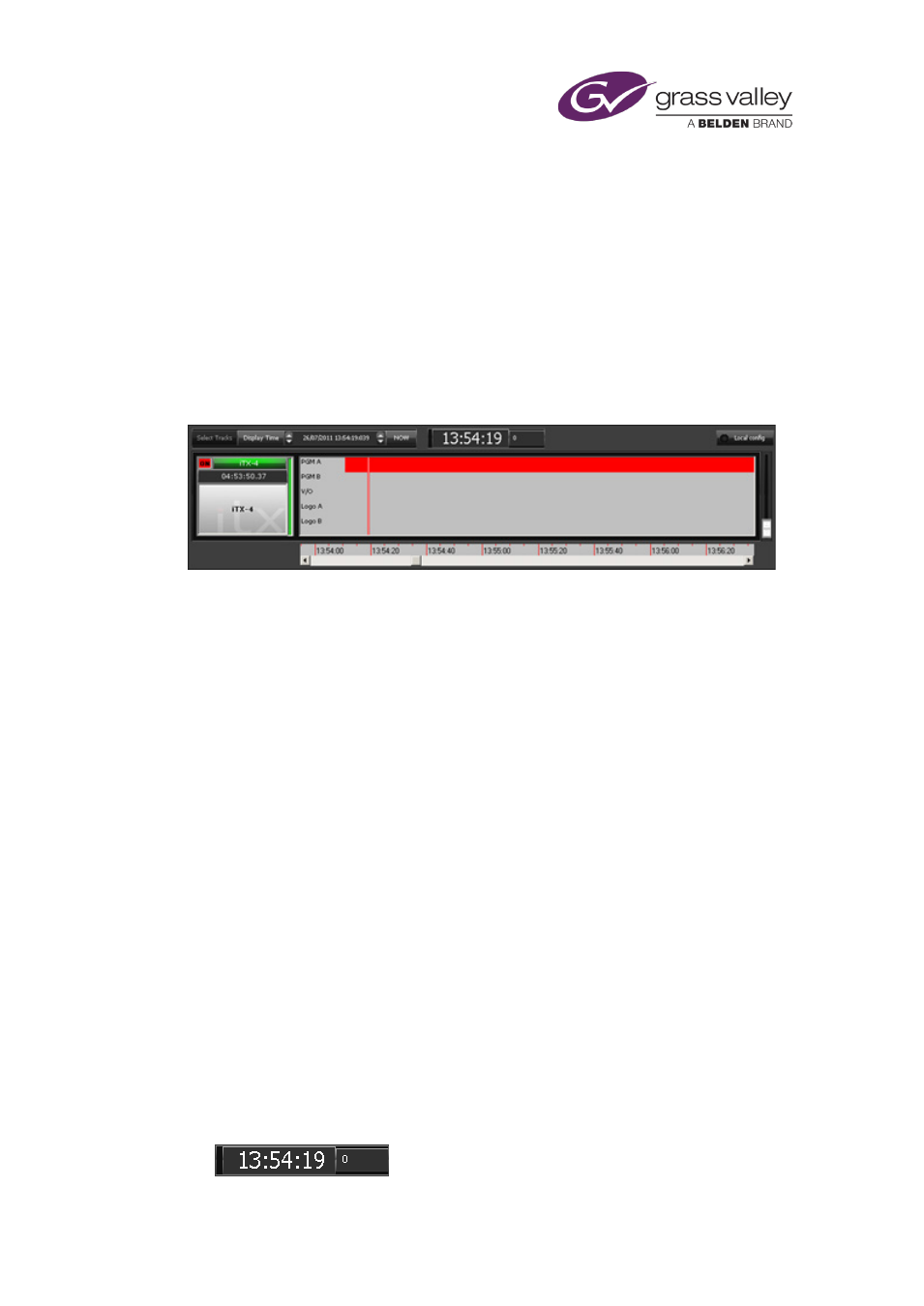The timeline display, About the timeline display, More details – Grass Valley iTX Desktop v.2.6 User Manual
Page 147: E 127

The Timeline Display
The Timeline Display
About the Timeline Display
The Timeline Display is a moving time-based graphic that shows you what events are currently
on air, and what events are due to follow them, in the channel you are monitoring. All
information on the Timeline Display is shown in the channel's local time.
The illustration below shows a single-channel timeline. The multi-channel version, which
displays information for more channels, has identical features.
The Timeline Display has these main features:
•
Color-coded blocks represent schedule events. iTX arranges the blocks, from left to right,
in schedule order. The color of a block changes with the changing status (cued, on-hold,
etc.) of the event it represents.
•
Tracks. Events of different types appear on separate horizontal tracks. There are two
program tracks (PGM A and PGM B) for video-clips and still-image events. In general,
primary events that play in sequence appear on the PGM A track; events featuring items
that overlay the main items, including those that start with a dissolve transition, appear on
the PGM B track. There are other tracks for secondary events (CGs, logos, etc.).
Your system administrator may configure the default tracks for a channel. You can also
specify the tracks on which the Timeline Display presents information.
, page
•
Present-time indicator. A red vertical line spanning all tracks represents the present time
of day. The blocks move past the present-time indicator as the events take place.
•
Time scale. The scale at the bottom of the Timeline Display marks the time over the period
within view. You can zoom your view of the Timeline Display to cover a longer or shorter
period; you can focus the view on an earlier or later period.
•
Clock display. The clock display above the tracks shows the channel's local time. In many
television broadcasting stations, system time is measured in the international standard
time system known as UTC (Co-ordinated Universal Time). For each channel in your iTX
system, your system administrator can set an offset from UTC; local time can also be
adjusted for daylight saving time (DST). The timezone-offset box, to the right of the clock
display, shows the amount of any offset from UTC.
For example, if the local time is the same as the system time (UTC), the timezone-offset
box shows "0":
March 2015
iTX Desktop: Operator Manual
127
